Infographics

Post-Crash Care Infographic
This infographic underscores the vital role of EMS and 911 in responding to nearly 1.5 million motor vehicle crashes each year and highlights post-crash care as a critical part of the national effort to reduce roadway fatalities and serious injuries. It reinforces the Department of Transportation’s long-standing commitment to strengthening EMS systems to save lives after crashes.
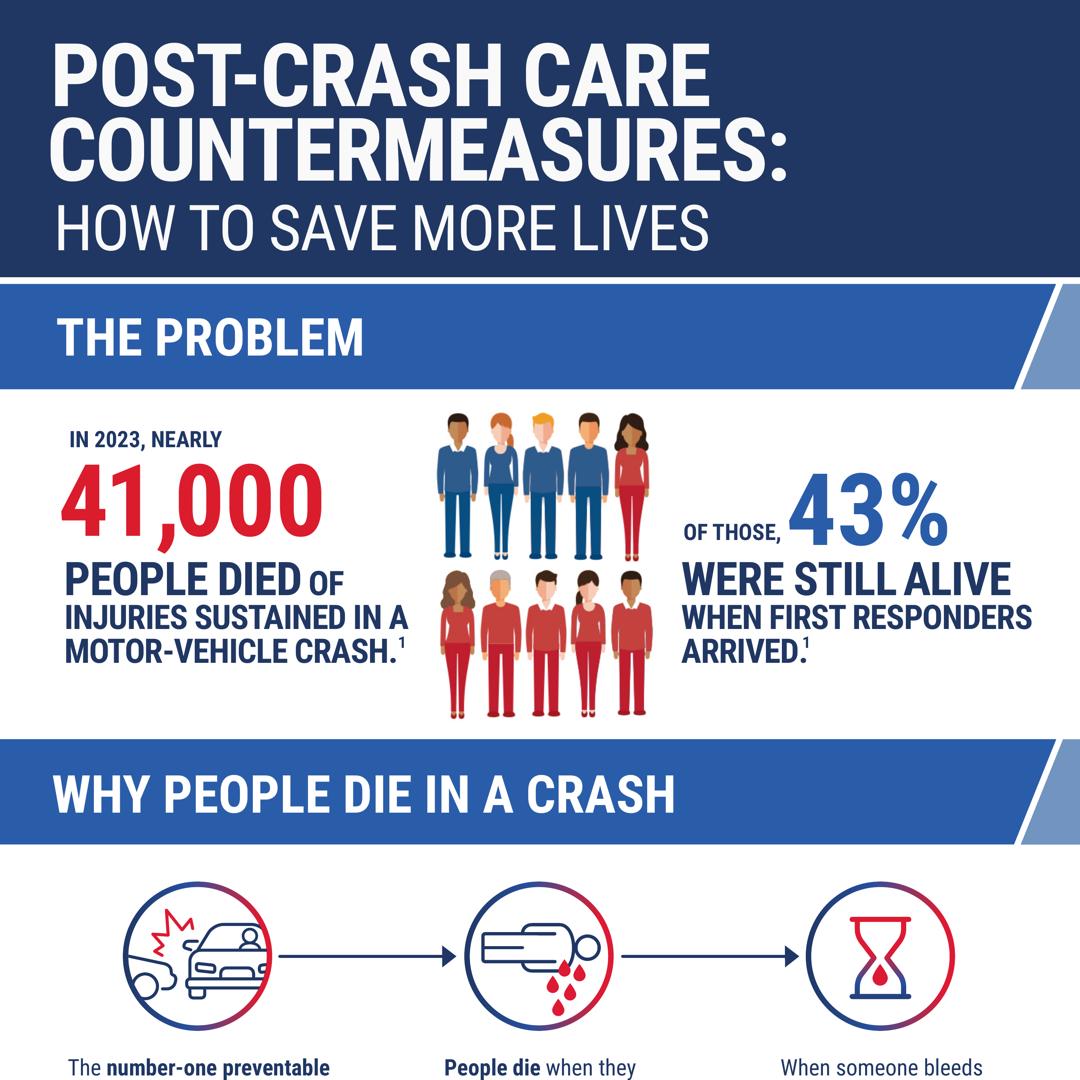
Post-Crash Care Countermeasures: How to Save More Lives Infographic
This infographic highlights key strategies and interventions in post-crash care that improve emergency response and patient outcomes after a motor vehicle crash. This educational resource serves as a guide for highway safety stakeholders to enhance post-crash care systems, emphasizing the critical role of EMS, 911 and highway safety in reducing fatalities. It features specific actions for highway safety and emergency response projects, including implementing advanced technologies, ensuring timely and appropriate medical care and coordinated response, and identifying system innovations such as prehospital blood transfusion.
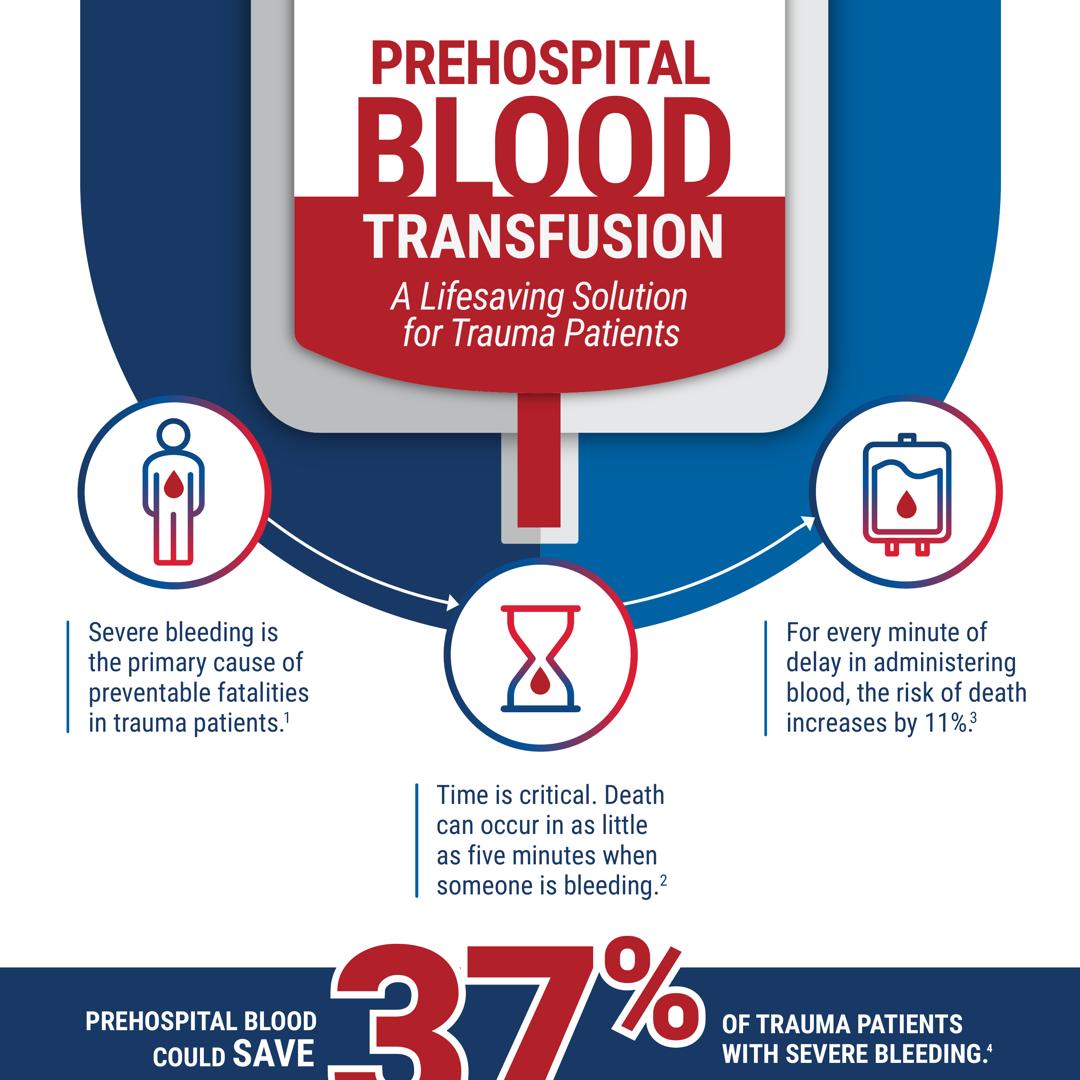
Prehospital Blood Transfusion: A Lifesaving Solution for Trauma Patients Infographic
This infographic provides an overview of the importance of administering blood transfusions in prehospital settings to improve survival rates for trauma patients injured in a motor vehicle crash. It highlights the benefits of early blood administration and the impact on patient outcomes based on existing research. The resource aims to educate EMS agencies and stakeholders on the lifesaving potential of this intervention and encourage its adoption nationwide.
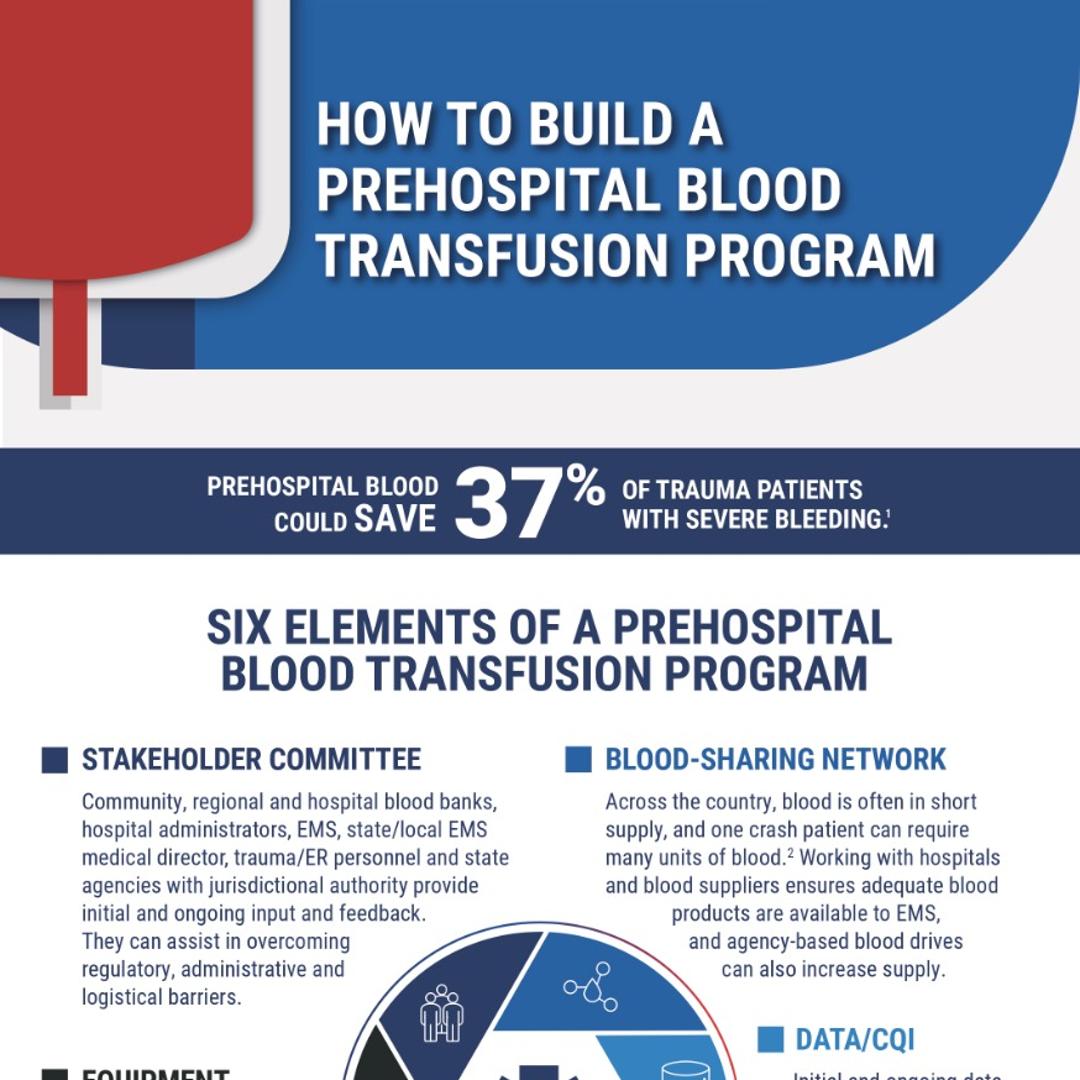
How to Build a Prehospital Blood Transfusion Program Infographic
This infographic provides a step-by-step guide to help EMS agencies and stakeholders establish a prehospital blood transfusion program. It addresses essential components such as forming stakeholder committees, building blood-sharing networks, training personnel, developing protocols, and ensuring proper blood storage and transportation. Designed as a practical resource to facilitate action, it provides details needed to help agencies implement this lifesaving intervention and enhance outcomes for trauma patients, including those injured in crashes.
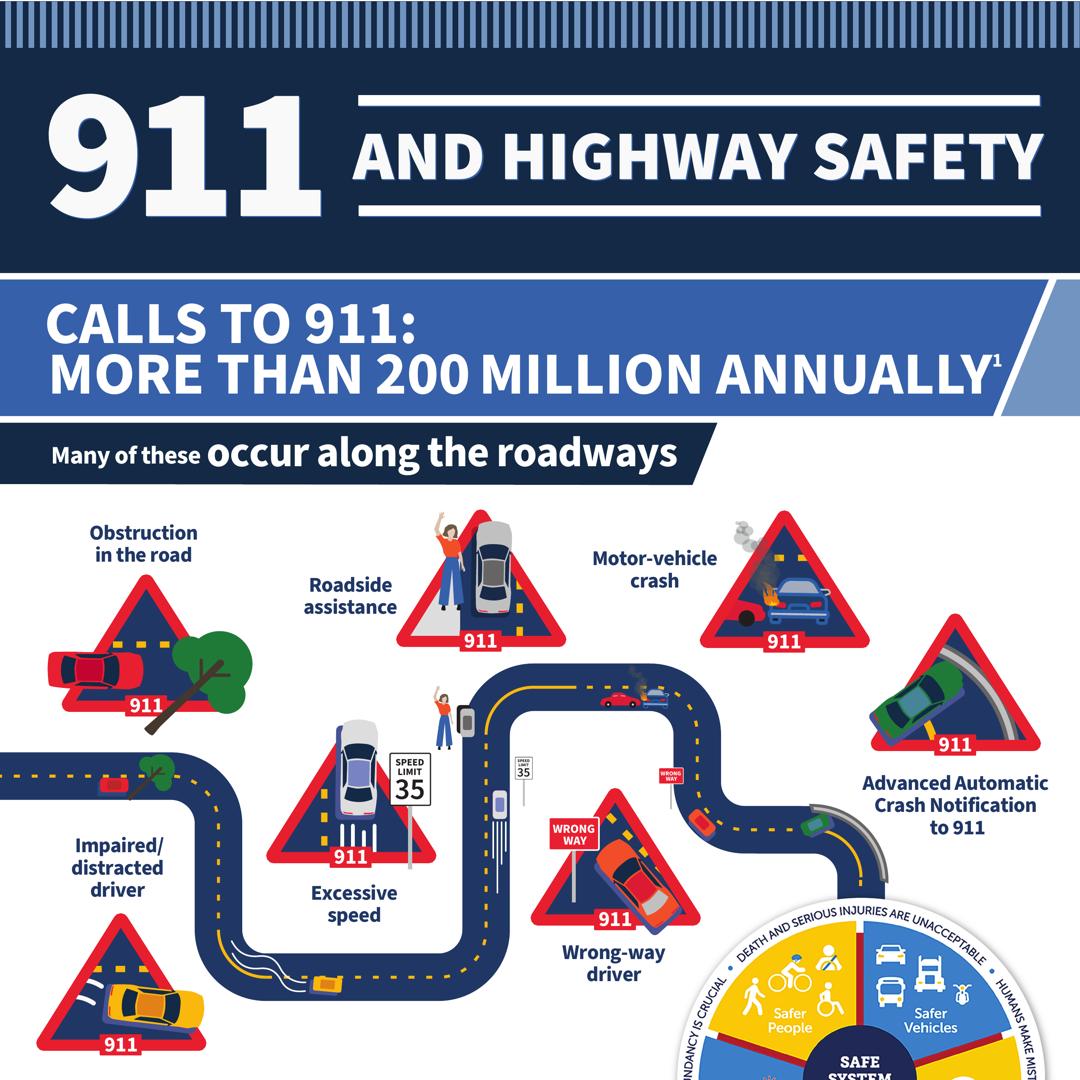
911 and Highway Safety Countermeasures Infographic
This infographic highlights the role of 911 in all five elements of a Safe System and the ways that 911 systems help prevent crashes and facilitate rapid and appropriate emergency response following a motor vehicle crash. It features key strategies to improve 911 operations and highway safety through enhancing 911 call center capabilities, improving data interoperability and utilizing real-time crash data and Geographic Information Systems to optimize emergency response and roadway safety efforts. By implementing these countermeasures, emergency dispatchers and highway safety professionals can enhance collaboration, streamline response efforts, and ultimately improve survival rates for crash victims.
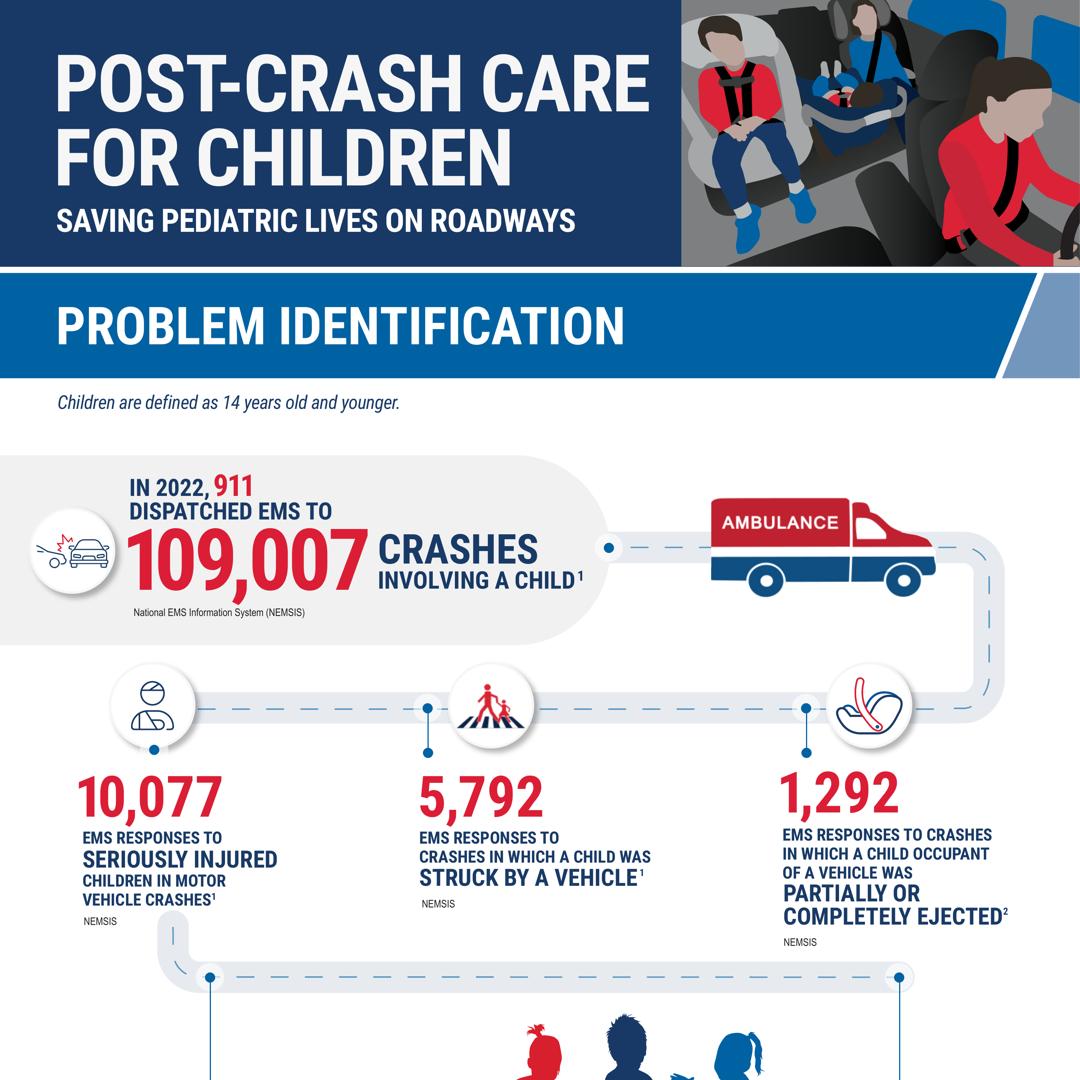
Pediatric Post-Crash Care Infographic
This infographic highlights the urgent need to improve post-crash care for children, showing that many young crash victims are alive when EMS arrives but later die from their injuries. It presents the latest national data and offers practical steps EMS and highway safety professionals can take to help save more lives.
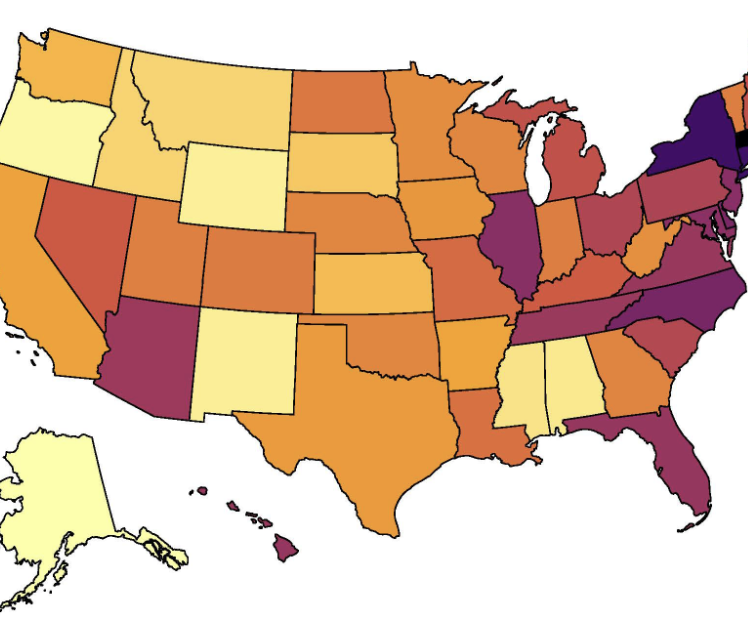
Percent of Motor Vehicle Crash Fatalities Who Were Alive at Scene Post-Crash by State (2019 – 2023)
This map highlights NHTSA findings from 2019-2023 showing that an estimated 43% of people who died in motor vehicle crashes were alive when EMS arrived but later died after leaving the scene—underscoring an opportunity to improve patient outcomes through advanced, life-saving countermeasures such as prehospital blood transfusion. View the full report on the U.S. DOT’s ROSA P portal.


